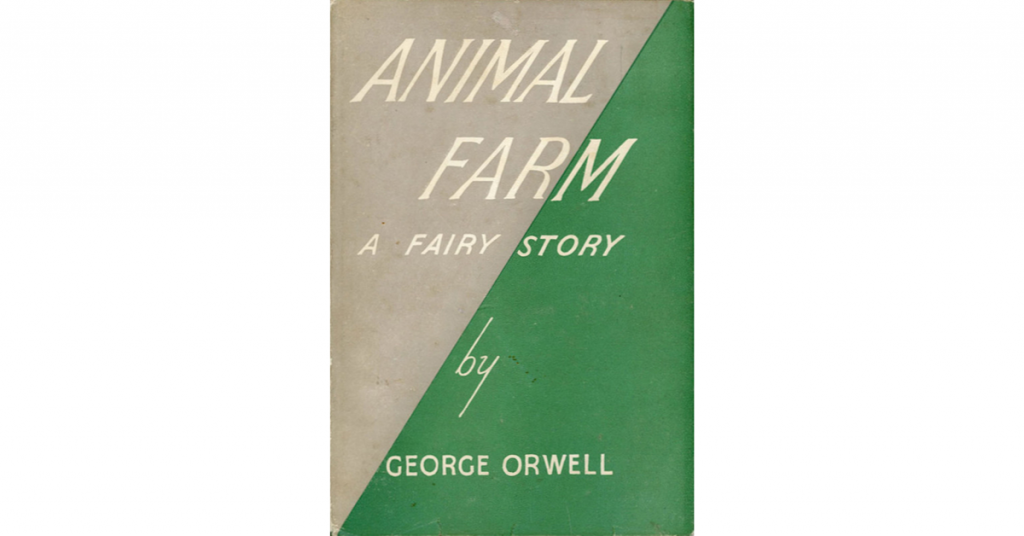Great writers such as Orwell, with his ability to communicate in a concise, clear and impactful way, provide some powerful lessons for those in the business of getting over an insight message. For instance, his classic Animal Farm – which deals with quite complex themes – is only a little over 100 pages in length and is written using short punchy sentences.
What I personally learnt from Orwell that I could apply to crafting business presentations was the importance of the following principles.
Clarity over your Purpose
The first lesson is that great business presenters have total clarity about their Purpose. Your purpose is about the change you want to bring about in your audience. A lack of purpose is a major reason why presentations – and indeed projects – do not have a successful conclusion. The presenter, at the outset of the project, does not have total clarity around their own purpose – what they themselves want to achieve. Consequently, they do not act with intentionality. Instead they just shuffle into the presentation with only the general aim of concluding the project!
Importantly, purpose is different from answering the business question and/or research objectives.
Your purpose could be to bring about a radical change in thinking amongst stakeholders, so they do not continue to make the mistakes of the past.
Or your purpose could be to make sure stakeholders do not react in a knee-jerk emotional way to the innovative ideas in your presentation.
Or it could be about whether you want stakeholders to shift from having a particular belief or perception to an alternative viewpoint?
It is important to be able to succinctly crystallise your purpose in a few sentences. You may or may not want to share your purpose with the audience.
A succinct Message
The next lesson centres on the importance of having a clear Message. It has been said, If you can’t sum up the story in a sentence, you don’t know what you are talking about. Summing up everything in a concise message increases the chances that your audience will be able to take appropriate action at the end of the presentation. Having a compelling message will also force you to crystallise what it is you want to say. It will also leave the audience in no doubt as to what it is that you represent and stand for. It will make your point of view completely transparent.
A succinct message is more likely to stick with your audience. This will also encourage the audience to share the message with others. A concise message becomes a script your audience can share with other stakeholders. A clear and memorable message will help you achieve a successful resolution to the business question.
An elegant Structure
It goes without saying that a compelling presentation will be built out of a structure that drives the story forward. Structure lies at the heart of creating a compelling story. An elegant story structure will ensure you are communicating with your audience in storytelling mode, not just dumping data.
A coherent structure sets the context, drives the flow of your presentation and organises ideas into categories to make it easier for the audience to understand your message. When a sound structure is in place, you do not notice it: you take it for granted. But, when there is a lack of structure, this creates a disconnect which can irritate the audience.
There is an architecture to an elegant story. Think of your presentation as having an overall architecture that drives the flow of your story. It will be a narrative that arcs from your introduction through to a conclusion. Your structure should take the audience on a journey (as in a film or play). And at different points in your story, create lean-in moments where you strike a powerful emotional chord.
Do not default to creating a data building block presentation. Do not fall into the habit of creating a presentation that is no more than blocks of evidence drawn from different phases of the research process. Instead, create an attacking narrative that integrates all the evidence into a compelling story.
The building block approach is the way many of us begin to assemble our evidence. But your final structure must go beyond simply presenting isolated strands of evidence with just a tenuous link to some form of conclusion. You need a structure that integrates the evidence, creating a flowing story that holds the audience’s attention and answers the business question.
Take care with your words
It is helpful to apply the George Orwell test. Apparently, Orwell used to ask himself, after each sentence, Could I have said that in fewer words, with greater clarity or in a more memorable way? This is a good tip for us all.
Concise: Could you cut the number of words you are using? The skill is in knowing what to take out, as much as knowing what to leave in.
Clarity: Could you craft your presentation in a simpler, easier to understand and intuitive-to-follow way? Cut any jargon or technical words that are not universally understood.
Memorability: Could you create a powerful communications hook that people will remember and share? For example, when Steve Jobs unveiled the iPod, he brilliantly described his revolutionary new product as 1,000 songs in your pocket.
My new book, The High Performance Customer Insight Professional: How to make sense of the evidence, build the story and turn insights into action by DVL Smith is now available on Amazon. This provides more easy-to-follow ideas for creating really impactful insight presentations.

